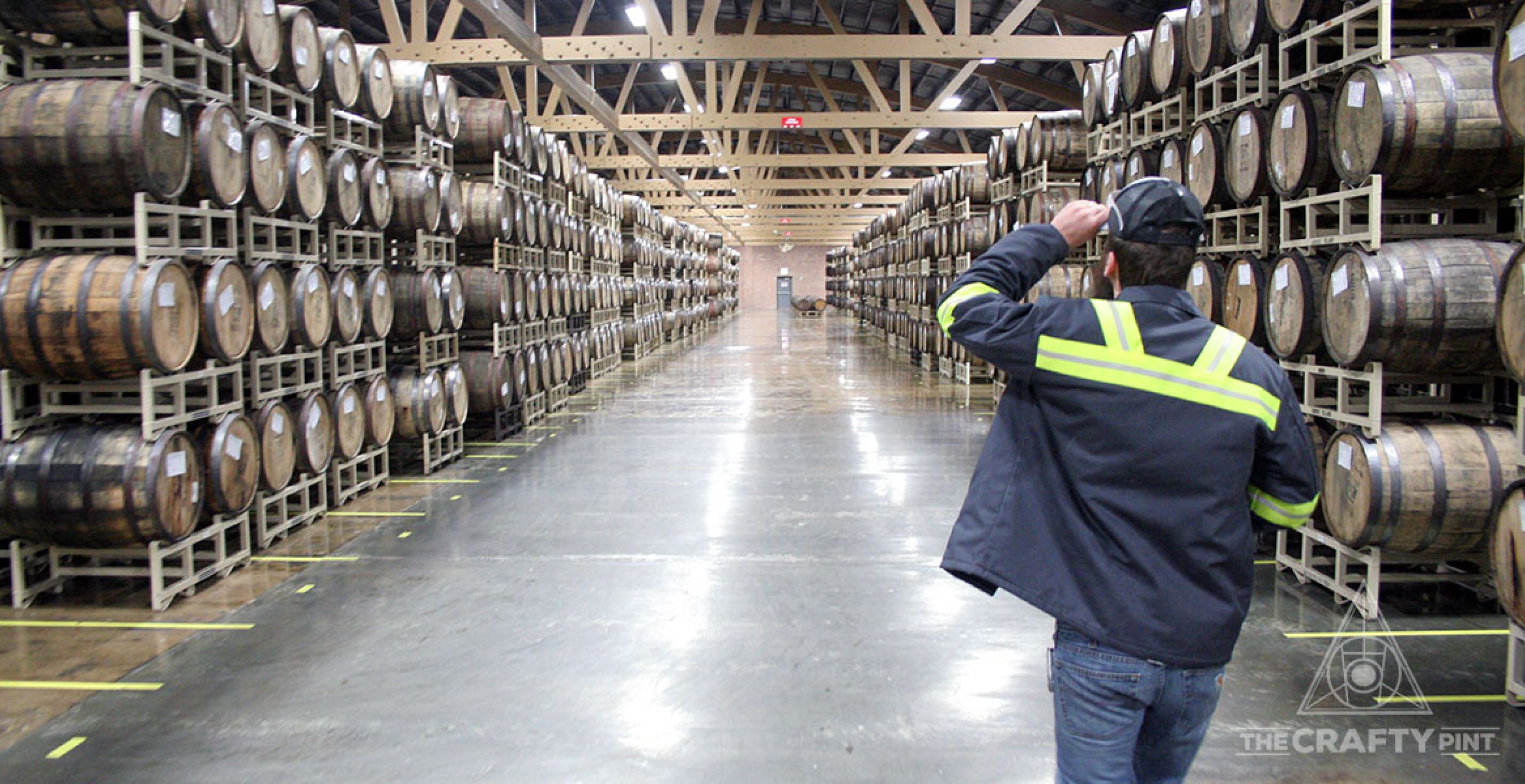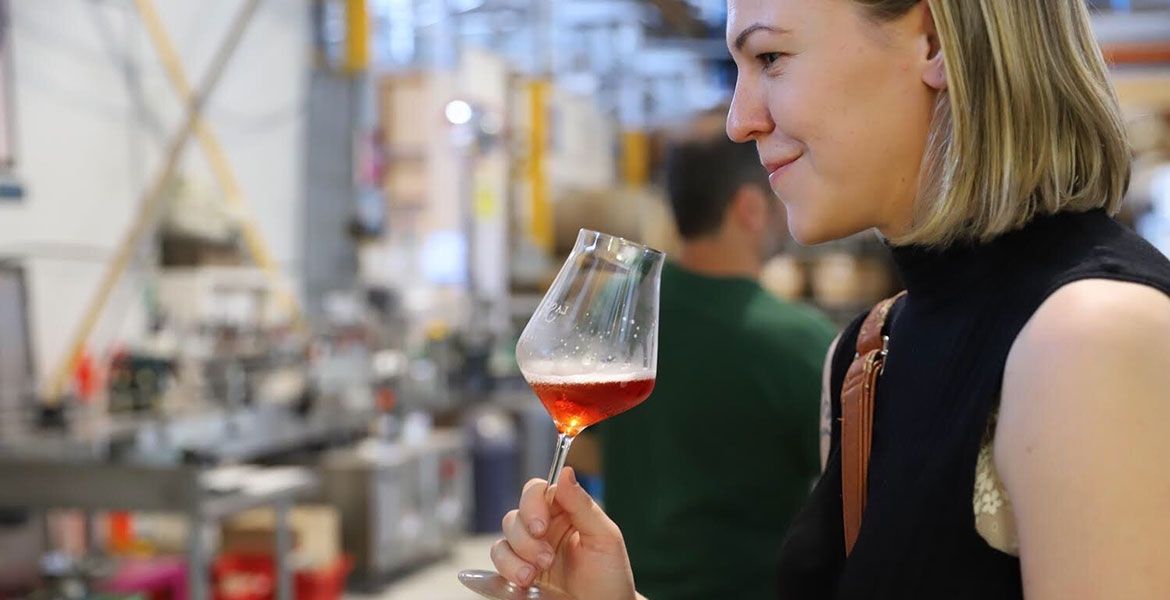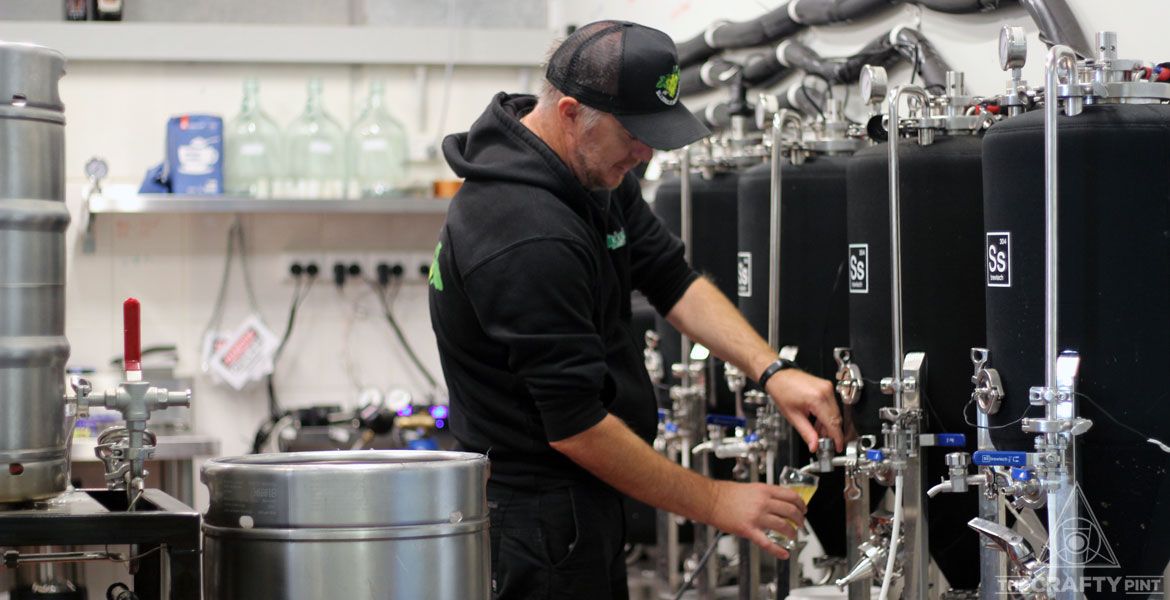For all the hype and noise surrounding the beer it produces, it’s remarkable how quiet Goose Island’s Barrel House is. From the outside it appears so unassuming too. You’d never guess that this single storey warehouse a little west of the Chicago CBD is home to one of America’s largest beer barrel ageing programs. Watch the front door all day and you’ll barely see a soul go in or out.
Bu then, none of the beer inside is actually made here. All that stuff – the heating and sweating and shouting – happens at Goose Island’s perpetually bustling Fulton Street brewery. The beer just gets hauled here in a tanker. And, when it arrives, the beer is only coming to take in the ambience; a giant raft of barrels suspended in a sea of serenity. It is all at once astonishing in scale, peaceful in nature and captivating in aroma.
To begin to understand this place it’s helpful to understand some of the story of how it came to be. And, like many things in Goose Island’s history, Greg Hall is at the heart of it.
Greg is the son of brewery founder John Hall and worked at the company from the time it opened in 1988 through to 2011 when it was sold to AB InBev. Twenty of those years were spent as brewmaster, a period during which he created several well known beers. But there’s one for which he’s best remembered: Bourbon County Stout.
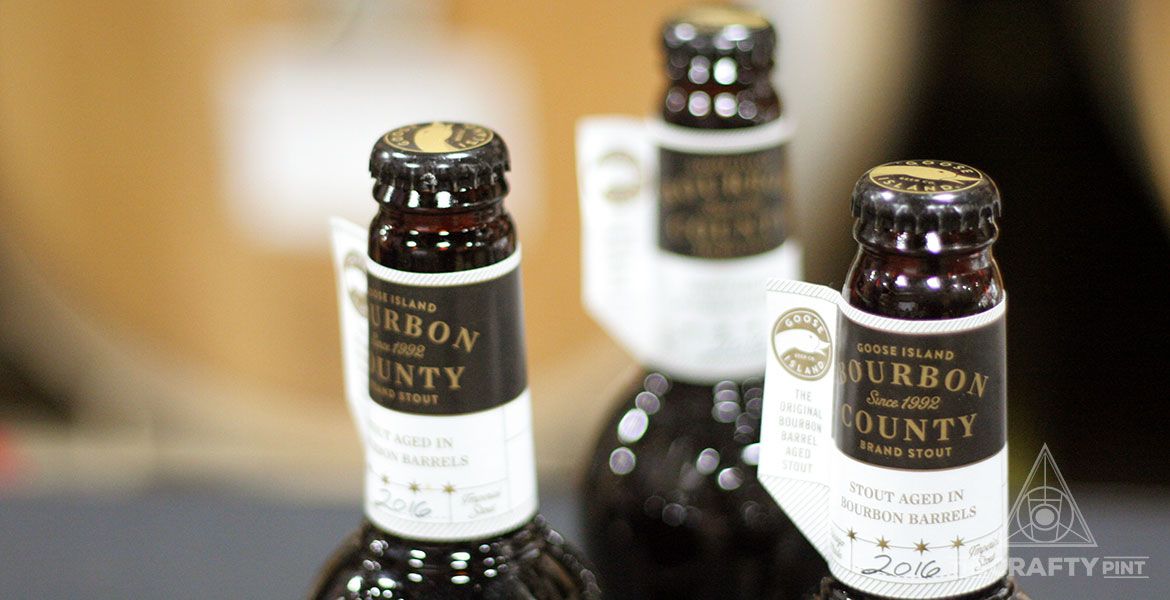
It’s a famous story in American beer, the one about the first commercially released bourbon barrel aged imperial stout. While a great many breweries these days have dabbled in a strong barrel aged beer of some kind, when Bourbon County arrived on the scene in the mid 1990s it was unheard of. The Goose Island brewpub was already changing the face of beer in Chicago but this beer changed the whole game.
“At the time, we were coming up on our one thousandth batch of beer,” said Greg when we met him in Chicago earlier this year.
“So we thought, 'That’s a nice even number. It’s got to be a really special batch because we’ll never add another zero. I can't imagine getting to 10,000.’
"I was scouring [renowned beer writer] Michael Jackson’s books thinking about a barley wine or doppelbock, but we’d already done those at the brewpub so it felt like we had to do something even more special.”
It was at that point fate apparently intervened.
“I was invited to do a beer and bourbon dinner in Indiana. I was the brewer and Booker Noe, the Master Distiller from Jim Beam, was the bourbon producer, so I sat next to him for the night and listened to his stories. It was magnificent.
"At the end of the night I said, ‘Is there any way I can get some bourbon barrels from you?’ He said yes, we arranged it, I got six bourbon barrels and I had to figure out what to put in ‘em. I ended up making a really big imperial stout.”
The idea was for Bourbon County to be a one time, celebratory release. But the moment it came out at the brewpub there were hints it was something special.
“We had regulars from the Chicago Beer Society who travelled all over the world and tried a lot of beers and they were like, ‘What is this? This is unbelievable, you gotta do this again,’” said Greg.
“We ended up entering it at the Great American Beer Festival and promptly got disqualified because it was barrel aged, too strong, too rich, too everything. But it raised a lot of eyebrows that year and even started changing a lot of thought about the festival itself; if you're making a great beer that doesn't happen to fit into a beer style, is it any less of a great beer?”
The answer to that question has now been clear for more than twenty years, with Bourbon County Stout long ago taking its place among the pantheon of great American beers.
It was pioneering in the way it was produced, it was disruptive to the status quo – from the flavour it offered to the price people were prepared to pay for it – and it helped herald in a new era of beer appreciation in America, one where it was OK to spend a full day lined up in the snow outside a brewery to try and get your hands on a single bottle. And it has left a mighty legacy in the form of Goose Island’s Barrel House.
“When I left the company we were up to about 1200 barrels and I thought, ‘That’s amazing, no one’s ever had 1200 bourbon barrels in a brewery before,’," said Greg.
“When AB bought the extra [Barrel House] facility, the first time I got to go in, before they moved anything in there, I thought they were insane. I thought they'd never fill a quarter of the space. I said, 'It’s gonna look foolish and you’ll embarrass yourself because there’ll be so much open space with a few barrels in the corner.’ It took them five years and they filled the whole goddamn thing up!”
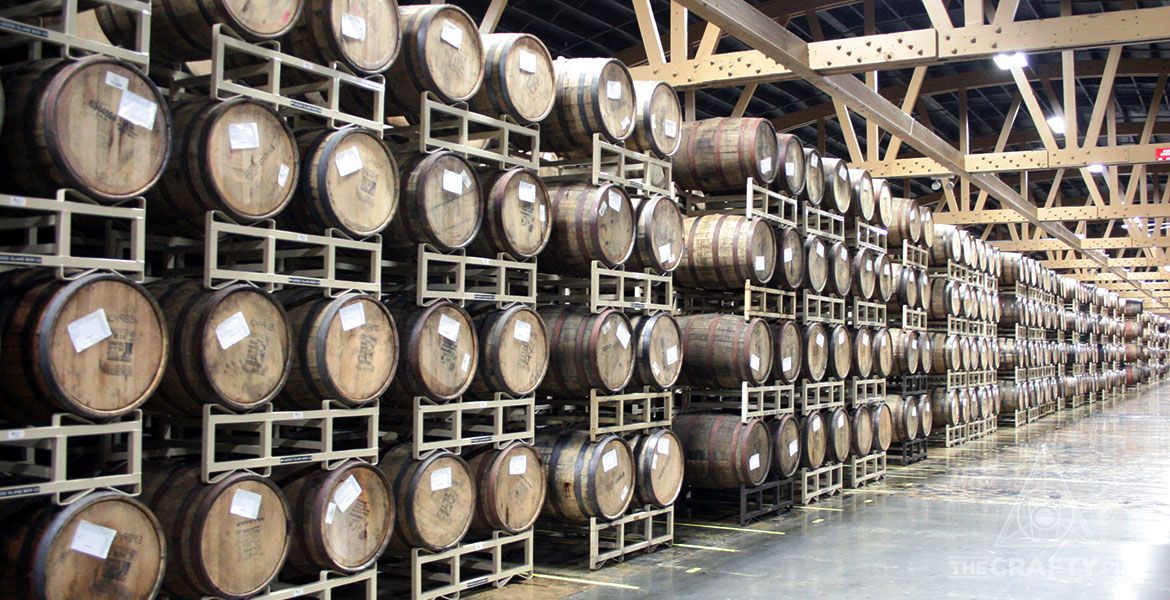
Now home to some 15,000 barrels of beer, it's an undoubtedly impressive setup. Bourbon County Stout is now brewed year round, though is still only released once a year in a variety of blends. Around half of the space is given to Goose Island’s sour beer program, which produces groundbreaking beers in their own right; together the Belgian inspired Sofie, Matilda, Lolita, Madame Rose, Juliet and Halia are affectionately known as the Sour Sisters. Then there are the constant experiments and blending trials, the foeder farm and the puncheons to further expand the repertoire. And the whole operation evidently keeps growing.
The man in charge of keeping everything running smoothly is Bill Savage, Lead Brewer of the Barrel Ageing Program. He travelled Down Under in May for the launch of Goose Island beers into Australia and, while here, took part in a collaboration with local barrel ageing specialist Boatrocker.
With the release of that beer, October, this week, and following our feature on Boatrocker founder Matt Houghton, today we spend time wandering Goose Island’s Barrel House alongside Bill.
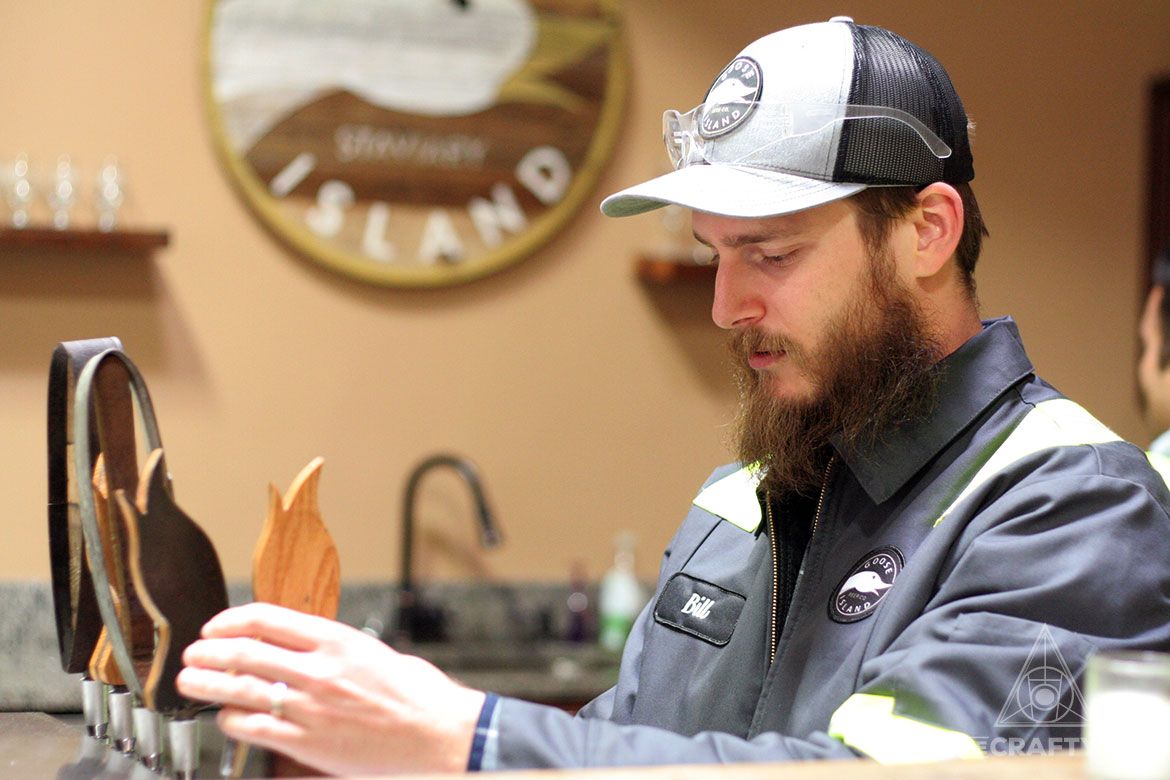
What was your path to the Barrel House?
Barrel ageing was something I’ve always had an interest in. I’ve kind of been involved since 2008, at first as a consumer then hanging around at the original [Goose Island] brewpub a lot. I grew up in the southern suburbs so I knew people who were getting into barrel ageing; a group called the Home Brewers of South Suburbia.
I started working at a home brew shop/winery, as kind of an apprentice winemaker, then went to Siebel [Chicago’s institute for brewers] and while there got more inundated with all kinds of stuff. From there I was around Chicagoland, at a small brewpub on the Southside for a little over a year. I've been with Goose since 2013, was a cellarman on the floor for two years, in the brew-house for a year, then started in my current role.
How did you find the experience brewing with Boatrocker at the bottom of the beer world?
The collaboration was great! Matt is such a great host and we were on the same page from the outset. His experience and love for beer are obvious the moment you talk to him.
Most things I saw and went over were pretty similar to how things go in the States other than metric conversions, which pretty much every brewer does all the time anyways. Local ingredients and availability were something I was initially a little worried about, but we planned ahead – and Matt’s work with barrels is impressive too!
There’s a degree of romance attached to barrel ageing beer. What’s the reality when you’re doing it every day?
There are rough days but it’s a pretty good job – we have a lot of fun. Fulton Street feels like a bit of an ant hill sometimes when we’re all crawling over each other to do things, but over here it’s pretty chill. I love waking up in the morning, coming in here and smelling what’s going on, especially in the sour ageing area where you get different smells at different times of the year. We definitely have our work for the day, but the exciting part’s the testing. It’s fun just to see how things progress. We’re always figuring what new processes we’re going to utilize, always tweaking and modifying.
How critical are you about the barrels you use?
For all our spirit aged beers we’re using pretty fresh casks and we have minimum specs so we’ll inspect them and do a quick rinse with ozone-water, fill ‘em and seal em up. That’s the vast majority of what we do. The rest is just waiting. But we’re doing it all the time so it’s a lot of to-ing and fro-ing.
A hard part for us has been understanding what we require in terms of quality of the casks coming in. A lot of breweries up until now have essentially just gotten whatever they can get their hands on. Now we’re hitting that point where quality counts. We hit up Heaven Hill specifically for this year’s Bourbon County release but we’ve used almost anything you can think of; any small distillery around town, if anybody knows anybody, we’ve done experimental stuff.
The wood itself comes in pretty rough shape a lot of the time, so anytime we get something that’s sub-par we’ll just send it back. That’s potentially a lot of product we’re holding onto or trying to get rid of. That side has been a real learning curve and it’s where our biggest critical eye is at the moment. A lot of smaller guys just take whatever they can get their hands on.
I’d say twenty percent are character barrels which you may like or dislike, or may have positive qualities that are overshadowed by something negative. Once you get into figuring out how to treat those casks differently you can try to highlight the better qualities. That’s the hard part, and I don't think we’d ever say we’re masters of that but hope our products speak to our continuing improvement. That’s just our approach. Everyone has their own way and we all like hearing what each other’s doing.
Do you aim for the same end product from year to year?
Not necessarily. I think we look for some of the same characteristics year to year but, because we’ve had such wide amount of cask types that we’ve used in the past and then done trials with - we’re kind of comfortable dabbling in different barrel types that come our way. With the amount we do, it’s time consuming enough coming up with a quality blend plan [and doing] sampling ensuring QA/QC parameters are met and make sure we’re executing that plan.
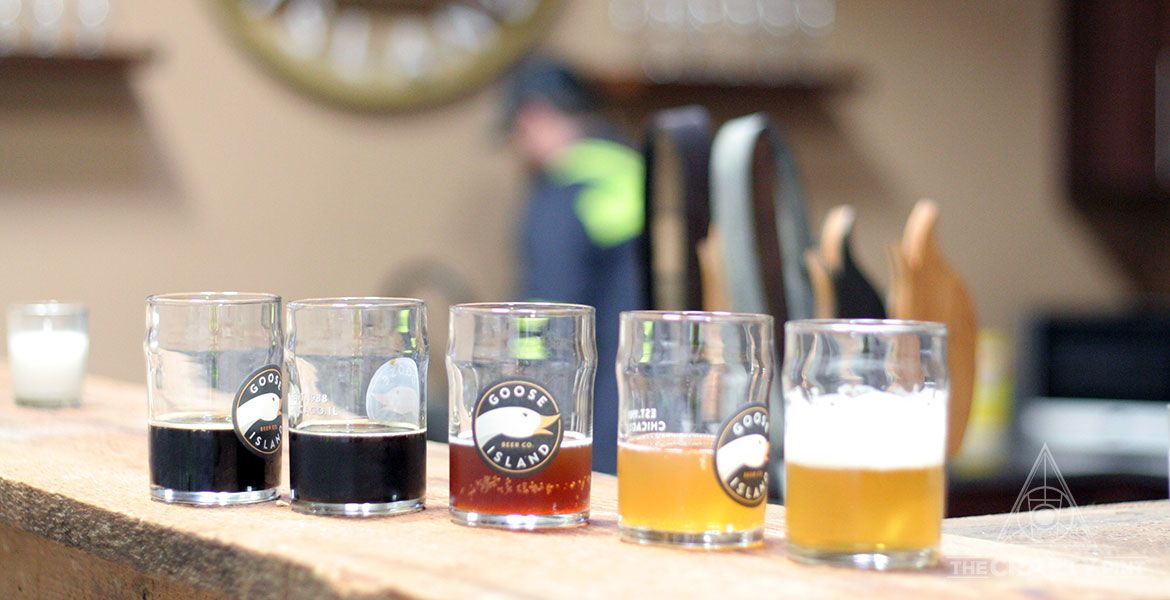
How do you monitor quality?
To start with, everything goes through an initial QA/QC check. Anything that gets sent to us [in a tanker from the Fulton Street brewery] already has analytics run on it, and the transfer itself has micro checks. Once it gets here we have a few more things: checking our casks, making sure they’re in good shape, making sure distillate is still in there and everything’s looking tip top. From that aspect it’s about making sure we’re not having too much oxygen ingress when we’re filling; it’s unavoidable, but minimizing it.
Typically we get around 120 barrels per tanker load, give or take. We’ll fill those, add fruit, add inoculant, let them sit and another week may go by before we do our next fill. So [in terms of age] they’re all kind of within the same ballpark, but not all.
Temperature and humidity control is something we don't have which most wineries do. [It’s] something we wish we had and don’t yet, but we’re working on it. Things at the top of the rack evaporate way faster than the stuff at the bottom but we don't want to be moving them because then we’re disrupting the pellicle, so there are lot of considerations to bear in mind when building up, that we’ve learned.
With the sour beers we’ll check them every three months or so, just random sampling, to see what sort of state they’re in and whether there’s an odd cask here and there. If it’s something, we’ll dig into it further.
Do you get rid of a lot of barrels?
With the sour beers that’s the inherent part of the job. Over time, with wear and tear, they just kind of get decrepit, so we’re taking a more critical eye on those and anything that dries out quickly we’re getting rid of. I think the program started using some freshly dumped wine casks but over time we’ve gotten all kinds of previously held liquid in those. As some get old, we replace and replenish our stock in order to keep integrity high and maintain some great oak characteristics in our beers.
On the bourbon side we don’t reuse casks. So we’ll send them off to get made into flower pots. We’ve had a couple projects that have re-used bourbon casks that had held BCS, but they’re now only for sour beer projects. Just like bourbon whisky, our BCS has a single fill – once we empty that barrel, it can’t be used for Bourbon County Stout again.
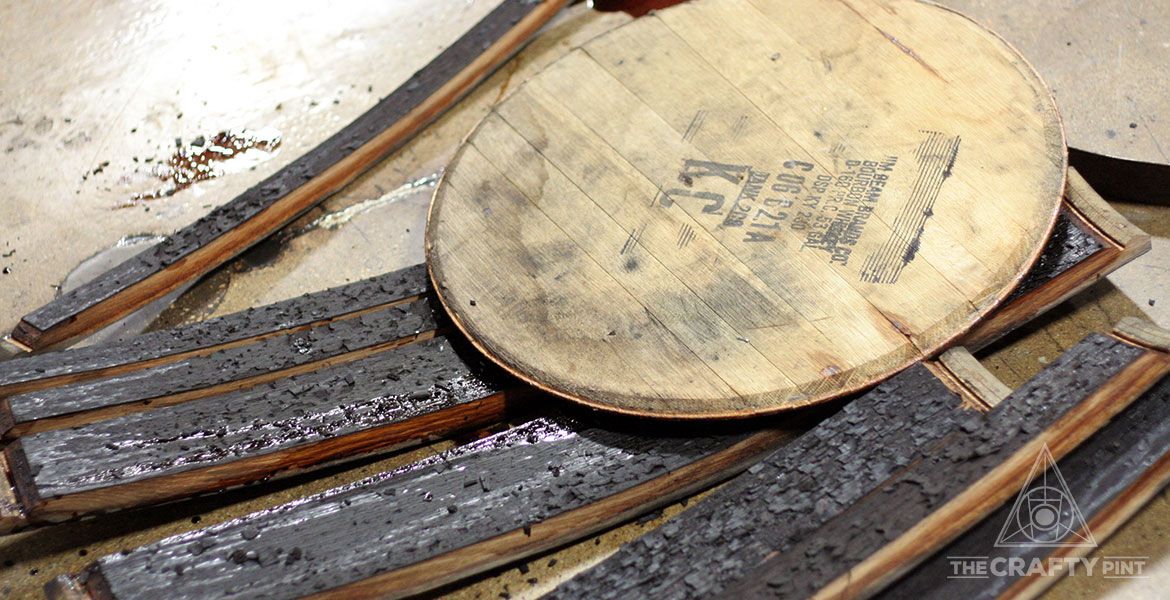
Where do you see barrel beers fitting into the wider market?
I think there’s a time and a place for everything. There’s still a lot of hype and the people who have been following for a long time are into it, but there are so many newcomers in the craft sphere so it’s a matter of figuring out what we’re catering to, where, and which markets. I think we need to figure out what kind of approach we want to take. We’ve got five really good brands we've continuously made since 2010 so we're focusing on those and making sure they come out really well, and go from there.
Beer and food pairing, at least in the states, is the way we’ve been doing some additional consumer focused education. We try for more of a food experience rather than just going to a bar and hanging out. It’s supposed to be an elevated and enjoyable time, hopefully better than sitting in a classroom.
My wife isn't really a beer drinker but when we were getting to know each other and I was trying to educate her palate, she wasn't having any of it. But, when my sister came to town, we had tasted some Sofie, not really knowing what it was, so I was explaining to them and she took a sip and said, “This is really good”. Sofie’s definitely a good gateway beer that helps open dialogue to different styles. Sofie is a partially barrel-aged beer we make, that’s very refreshing and goes great with almost any food.
How do you manage one off experiments towards wider releases?
When we’re doing experimentation, we don’t always know what the expected outcome should be – that’s the fun part. If trialling, we’ll pull some hopefully representative samples and we’ll do blend trials but also taste each individual cask as a team, go over it with the lead brewers and figure out what we like, what we don’t, get a consensus and figure it out from there. Then we’ll get it aligned with the QA/QC team and weed out anything sub-par. We don't do many tiny blends as a one off. Small for us here still usually means 50 bbl or 1550 gallons!
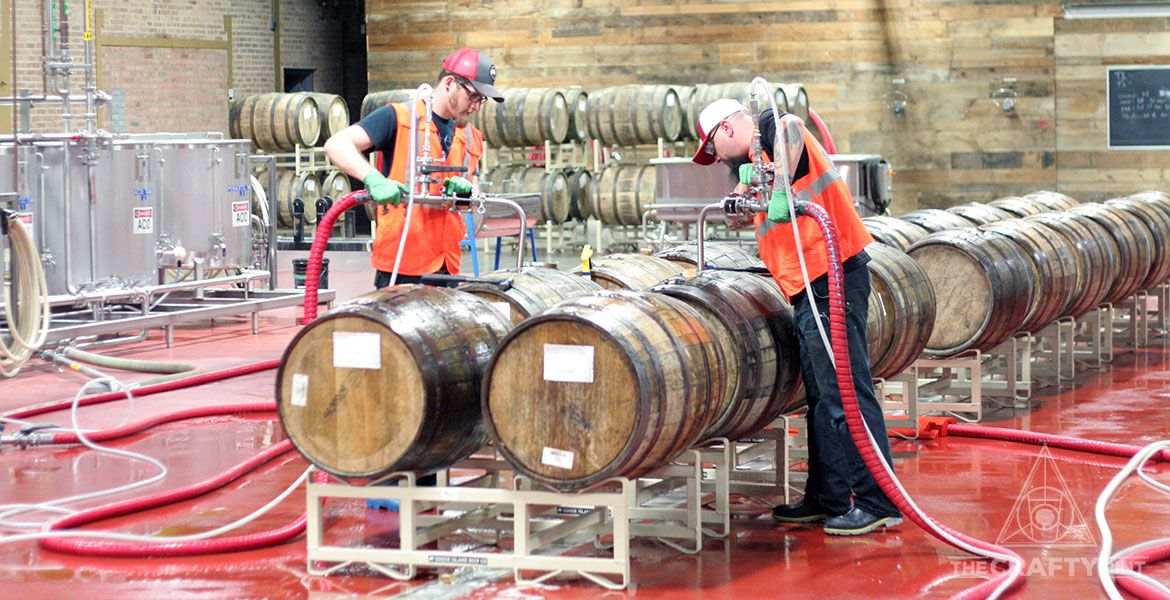
What's going to be keeping you busy in the Barrel House in the near future?
Every year we do a Chicago-only release of BCS and it’s a small one-off batch. We’ll leave it up to the brewery to come up with a special ingredient to add every year, so last year one of our brewers came up with a cocoa nib and chilli pepper addition and it tasted very similar to chewing on a cigar, that kind of spicy, leathery and cocoa characteristics so it was really tasty and unique.
With Bourbon County there was a big push just to sell nationally and I think we're still trying to fill in gaps for that. We’ve been going up in production volume pretty much every year. It’s an annual release but we brew it all year round. For our blending of these casks to get a fairly consistent product. We blend two or three different age groupings of many casks. This gives a complexity to the final beer that carries over to every individual bottle. There’s also always new variations in the pipe-line, so to speak.
With the sours, I don't know where we're going to end up. We have nine foeders and some puncheons, and our typical wine casks. Sours are kind of where our blending nuance comes into play more so we’re trying to develop different kinds of house cultures for varying flavor development in the future. We’re trying to develop our sour beers by doing a kind of selective blending program to come out with more individual beers over time. At the moment there’s a decent amount of beer that gets released, but finding time and space to develop these newer, smaller batches is great fun – but also a labor of love. Time will tell what we’ve got in store.
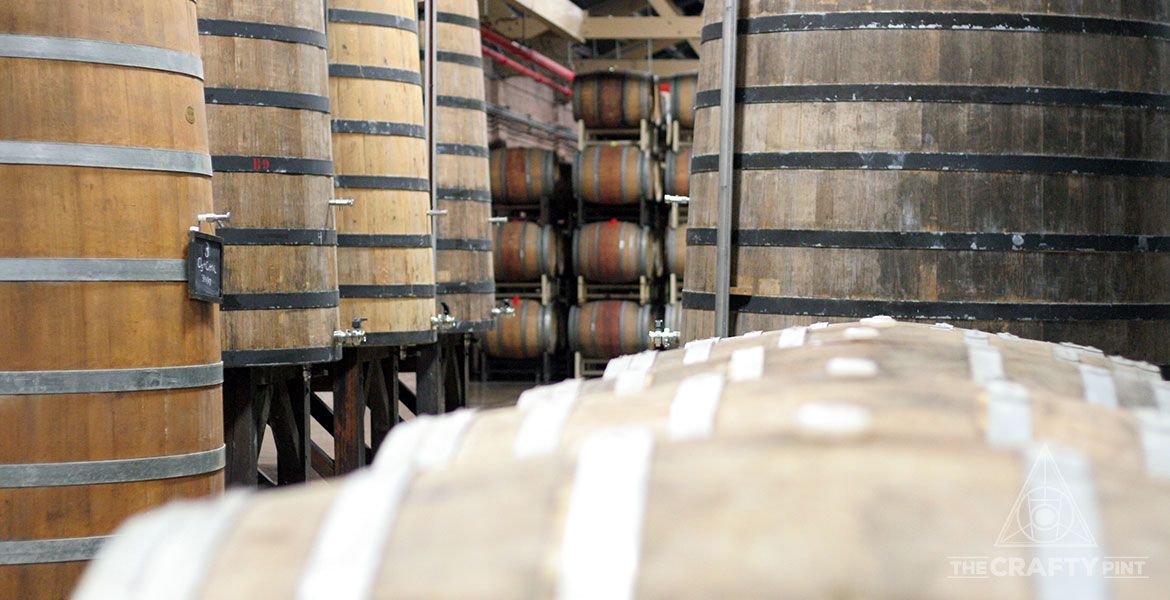
What are your thoughts on the way barrel ageing has grown so quickly in the wider beer industry?
I think it’s mostly great! I love seeing how other brewers are approaching different ageing techniques and the more people do, the better we all perform – which is good for anyone who enjoys these kind of beers.
What advice would you give to breweries that are just starting down the path of barrel ageing?
Set quality standards early, talk to others who you respect and learn what you can from more than one source.
You can read our feature on the Boatrocker Barrel Room here and check out other Day In The Life articles here.
About the author: Nick Oscilowski lives on the South Coast of New South Wales and writes about beer. He has nothing to complain about – especially considering he travelled to Chicago as a guest of Goose Island in April. You can read two other articles that followed the trip here: The Golden Goose: On Beer's Frontier and Where It's At: On Beer's Frontier II.



